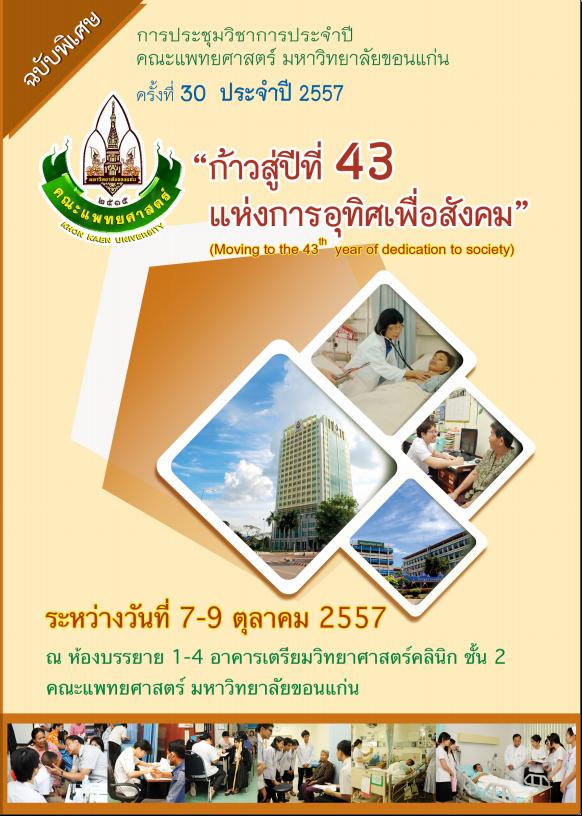Incidence and Pathogen Distribution of Neonatal Sepsis in Srinagarind Hospital
Keywords:
Neonatal sepsis, Incidence, Pathogen distributionAbstract
Background and objective : Neonatal sepsis is one of important causes of neonatal morbidity and mortality. The diagnosis of neonatal sepsis relies on history, clinical findings, and laboratory investigations, which gold standard for diagnosis is a positive culture of blood or sterile body fluids. Identification of pathogen distribution of neonatal sepsis is useful for empirical treatment. This study aim to review incidence and organisms caused neonatal sepsis in Srinagarind Hospital
Methods: This is a descriptive study in neonates with clinical sepsis born during January to December 2012, who admitted to the neonatal care unit, Srinagarind hospital. Their history, clinical manifestations, laboratory investigations, and management were thoroughly reviewed.
Results: There were 2,553 neonates born in Srinagarind Hospital. Four hundred infants were admitted to neonatal care unit, which 240 of them were diagnosed as neonatal sepsis with 314 episodes of sepsis. There were 22 episodes of proven sepsis in 18 infants which composed of 4 episodes (4 infants) of early onset sepsis (EOS) and 18 episodes (14 infants) of late onset sepsis (LOS). Gram positive organisms were the most commonly isolated pathogens in EOS (Staphylococcus aureus (25%), Coagulase negative Staphylococcus (CoNS) (25%), and Group B Streptococcus (25%)), whereas in LOS, the number of Gram positive and Gram negative pathogenic organisms were equal (50%) (CoNS (38.9%), Staphylococcus aureus (11.1%), Klebsiella pneumoniae ESBL producing stain (22.2%), Acinetobacter spp. (22.2%) and Stenothrophomonas maltophilia (5.5%)). Half of proven sepsis, especially LOS, occurred in very low birth weight (VLBW) infants. The organisms caused EOS in VLBW infants was Escherichia coli (100%), while LOS were caused by CoNS (40%), Klebsiella pneumoniae ESBL producing stain (30%) and Acinetobacter spp.(30%).
Conclusions: The incidence of proven neonatal sepsis in Srinagarind hospital was 7 per 1,000 live births. The incidence of early onset sepsis was 1.5 per 1,000 live births, while the incidence of late onset sepsis was 5.5 per 1,000 live births. Most pathogens caused both EOS and LOS in neonates were Gram positive organisms. However, most pathogens caused neonatal sepsis in VLBW infants were Gram negative organisms. Therefore, the pathogen distribution of neonatal sepsis is useful for choosing appropriate empirical antimicrobial treatment.



